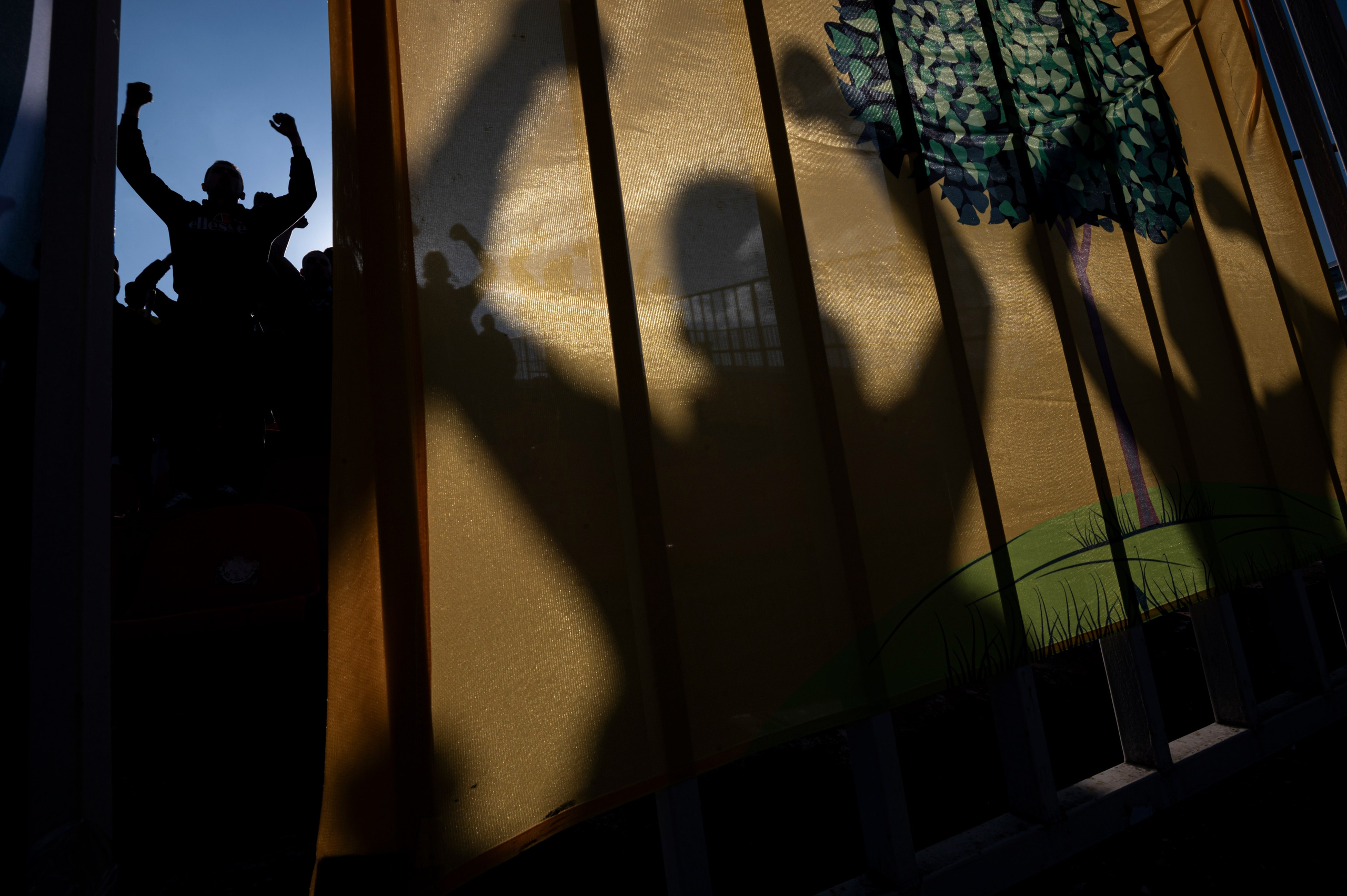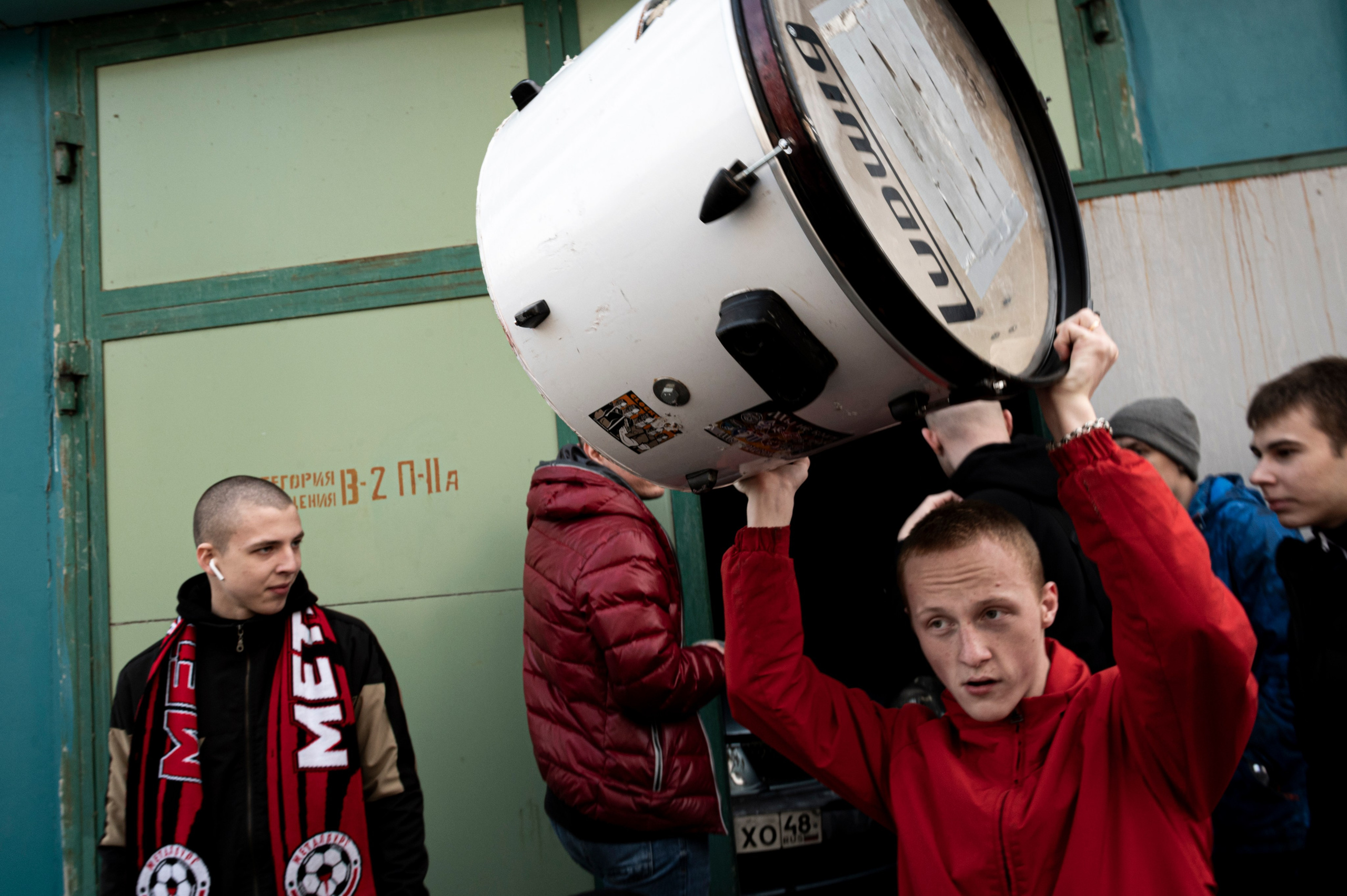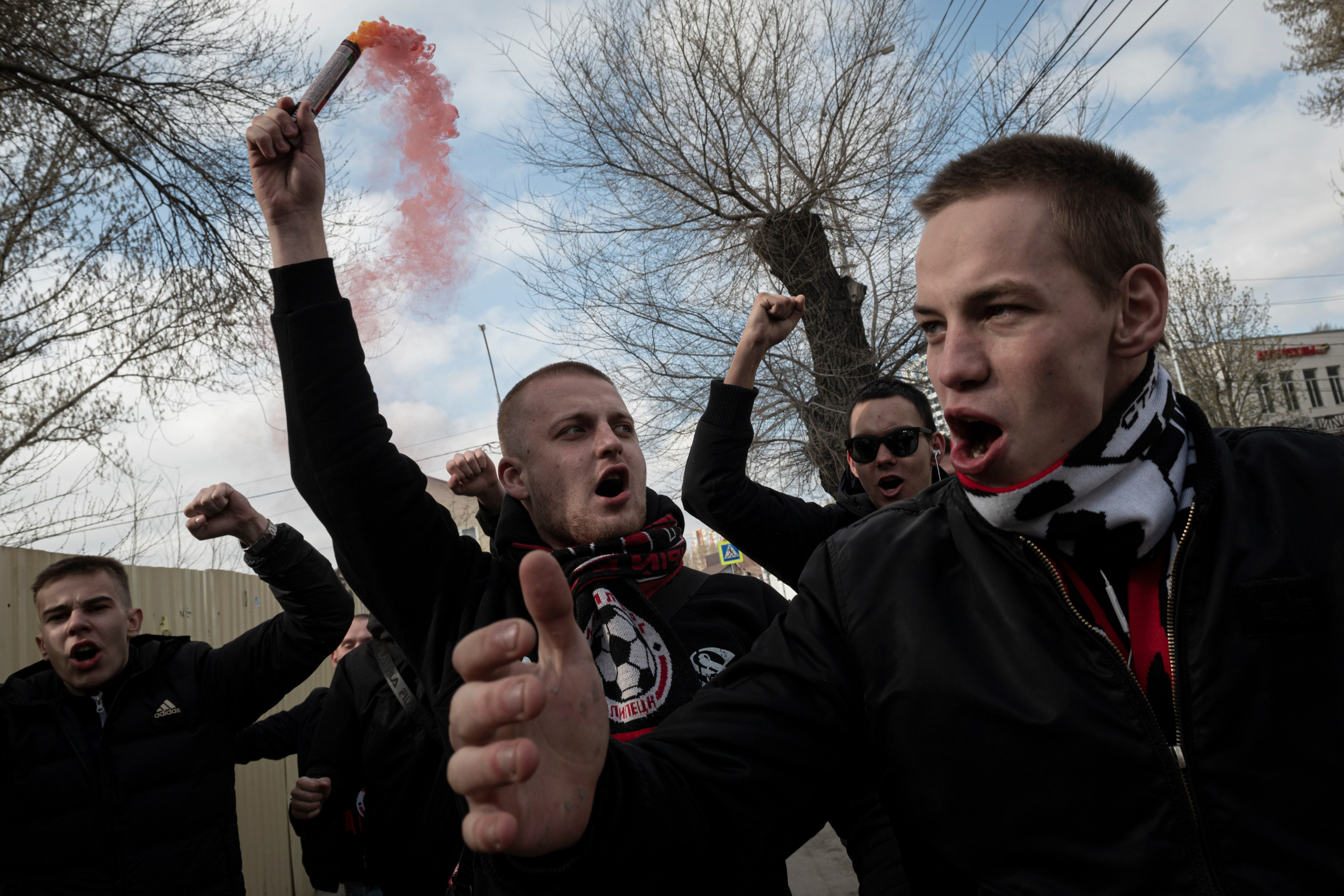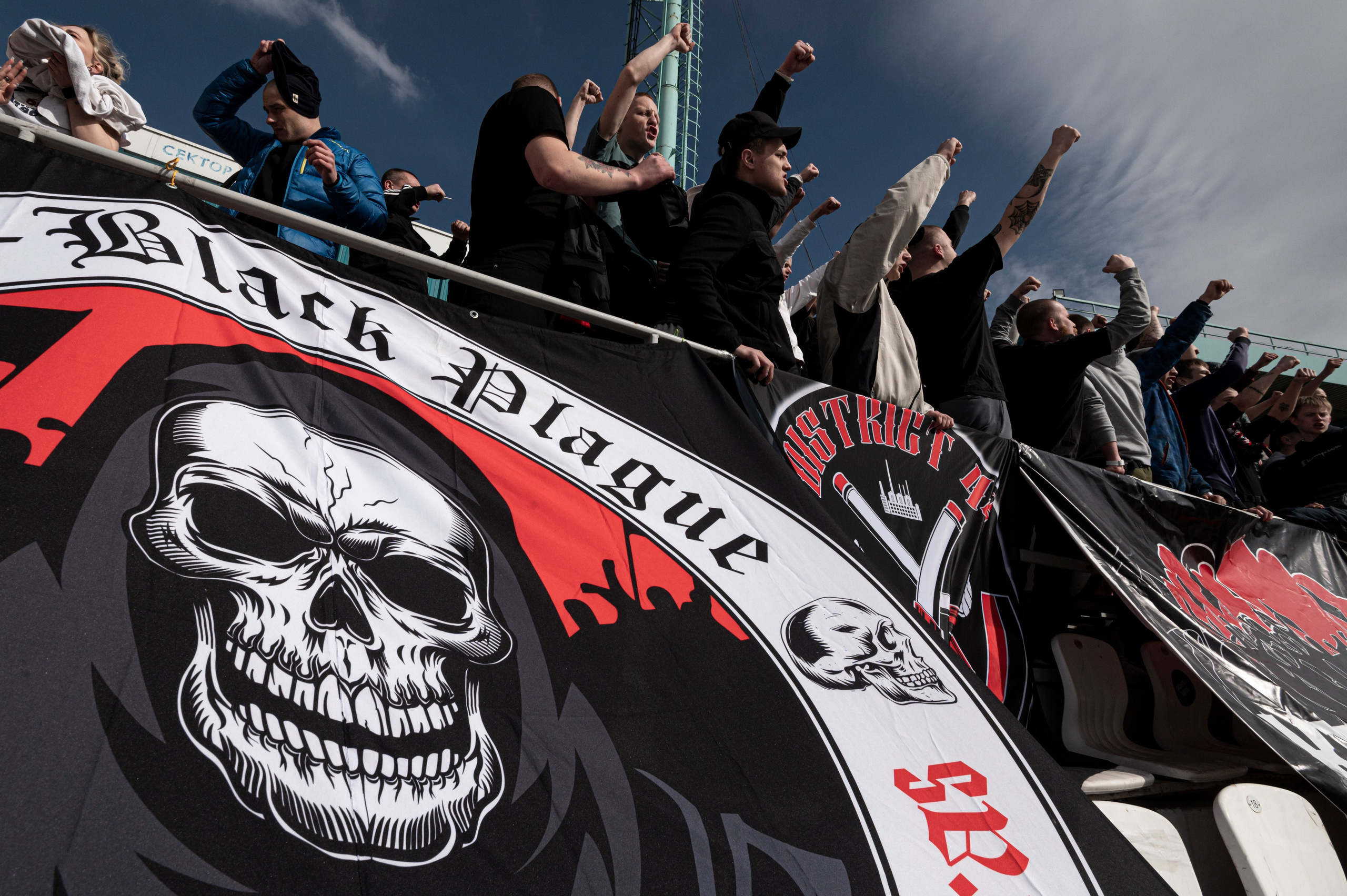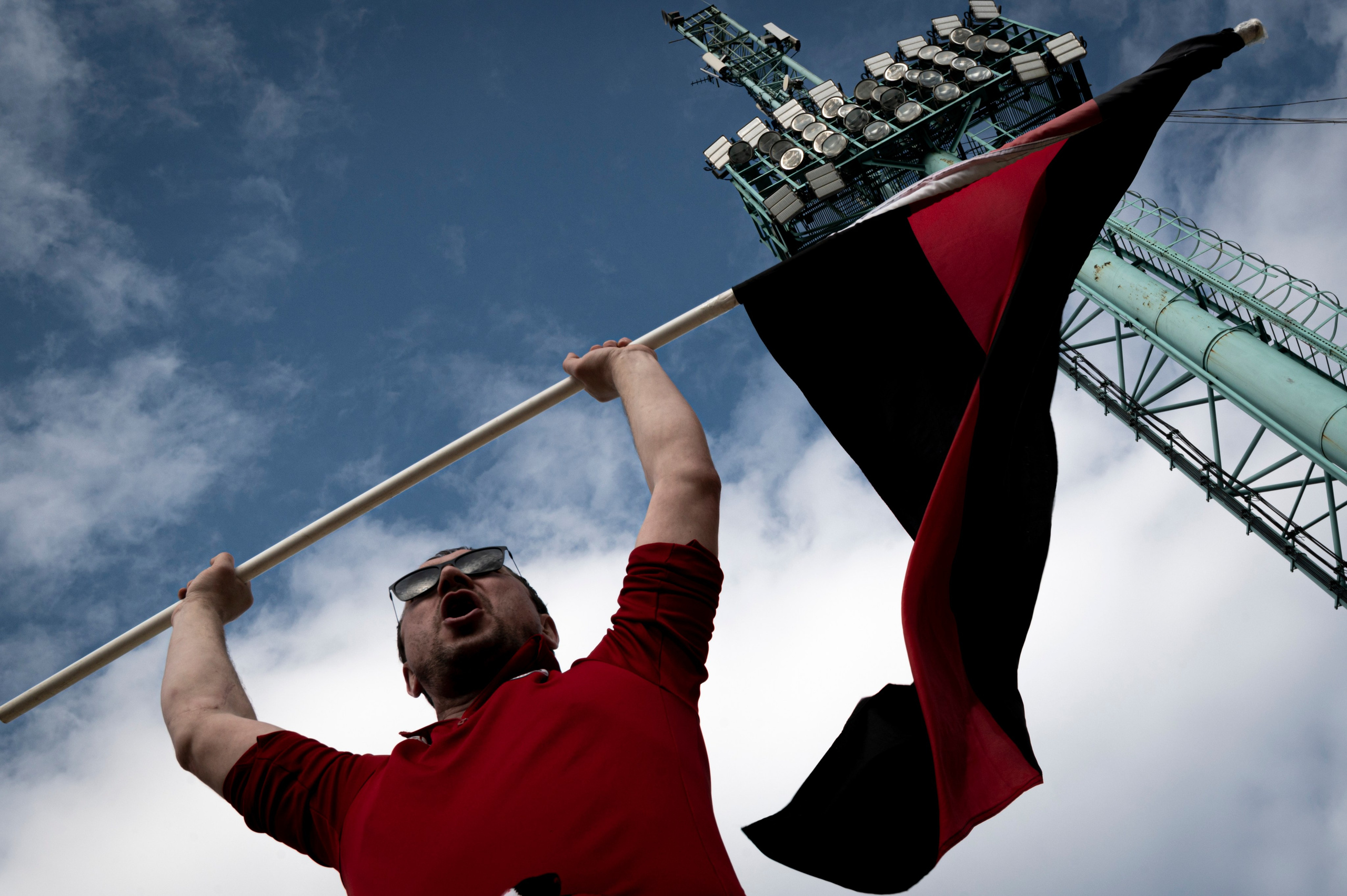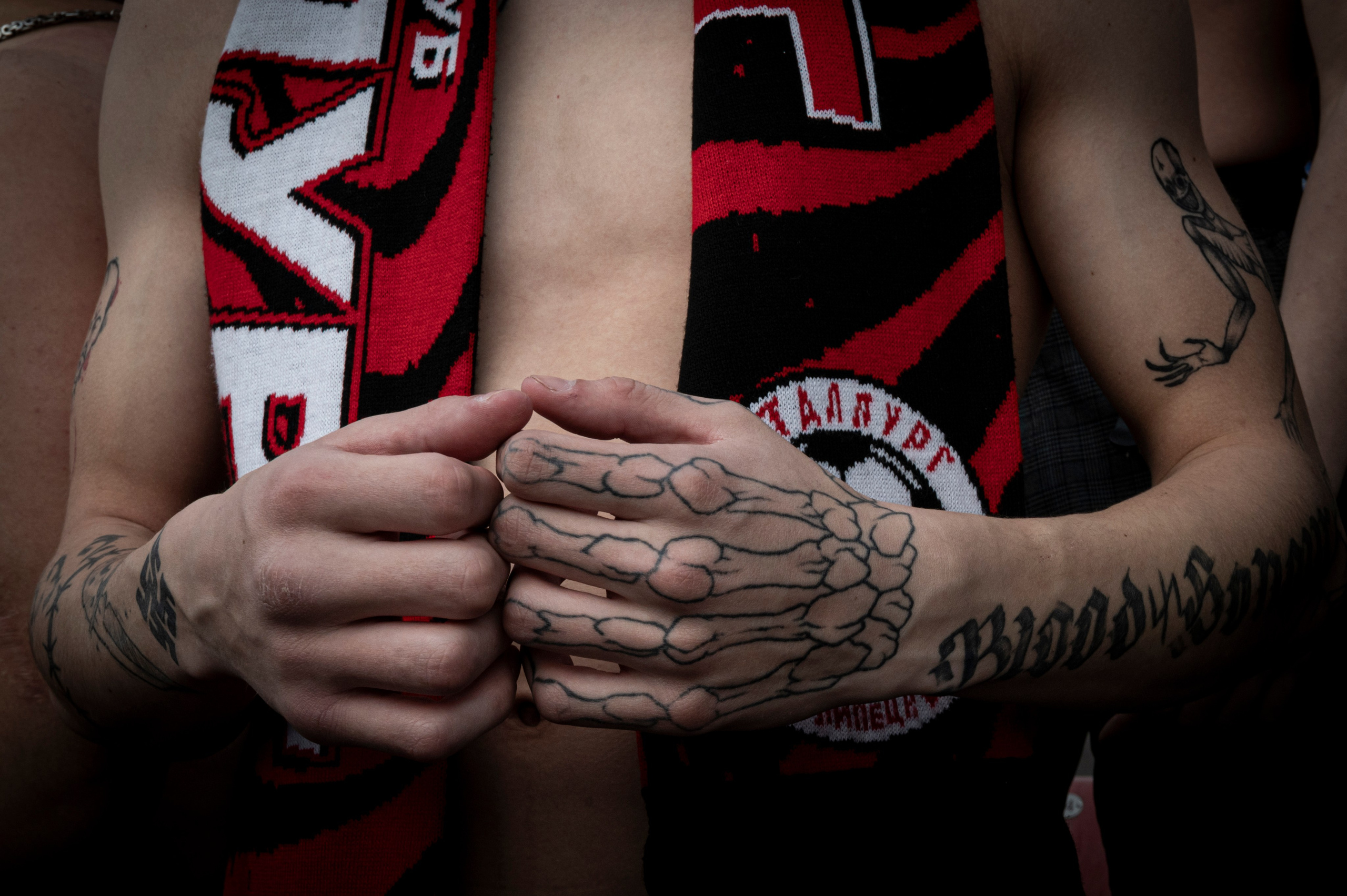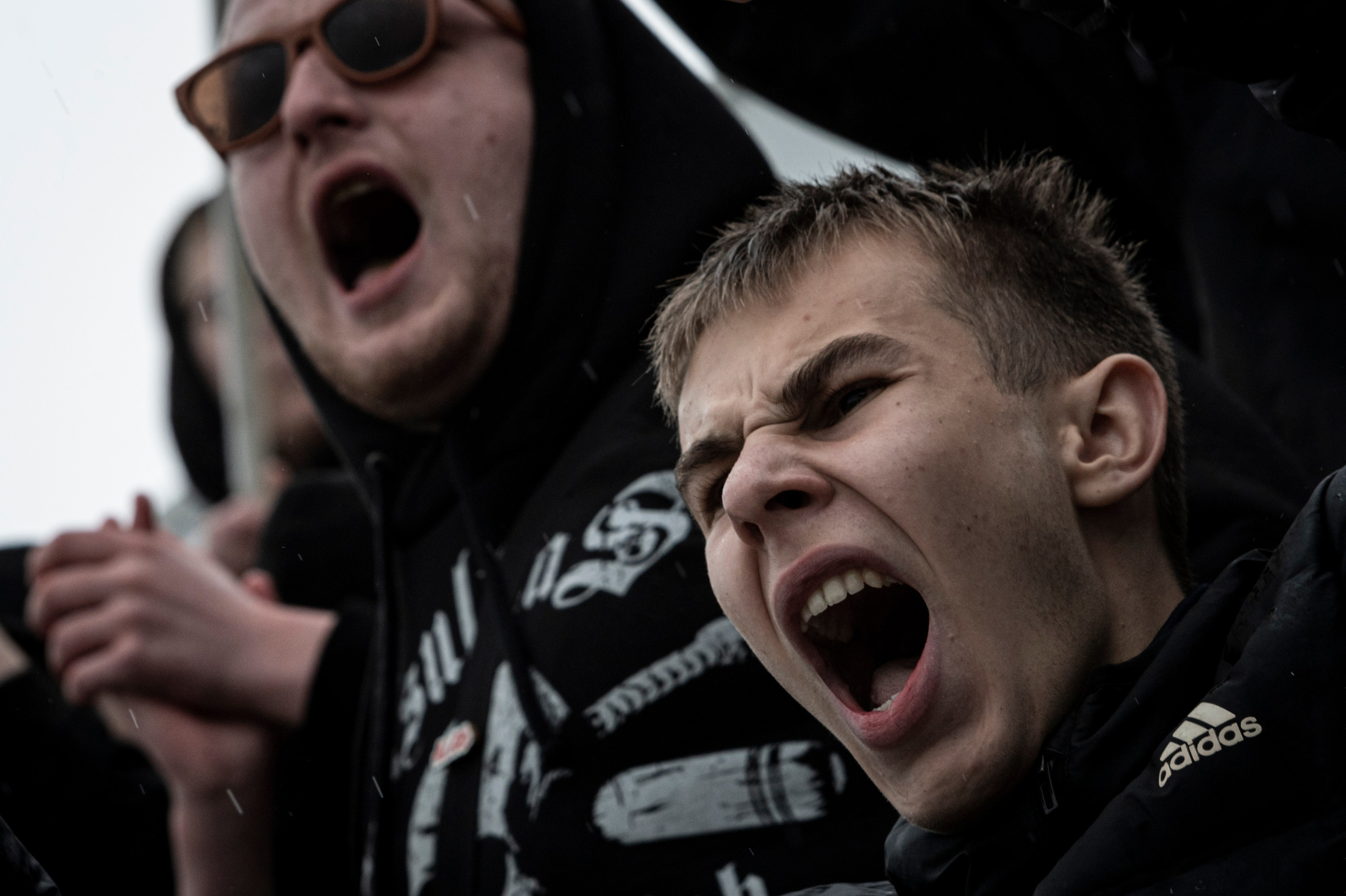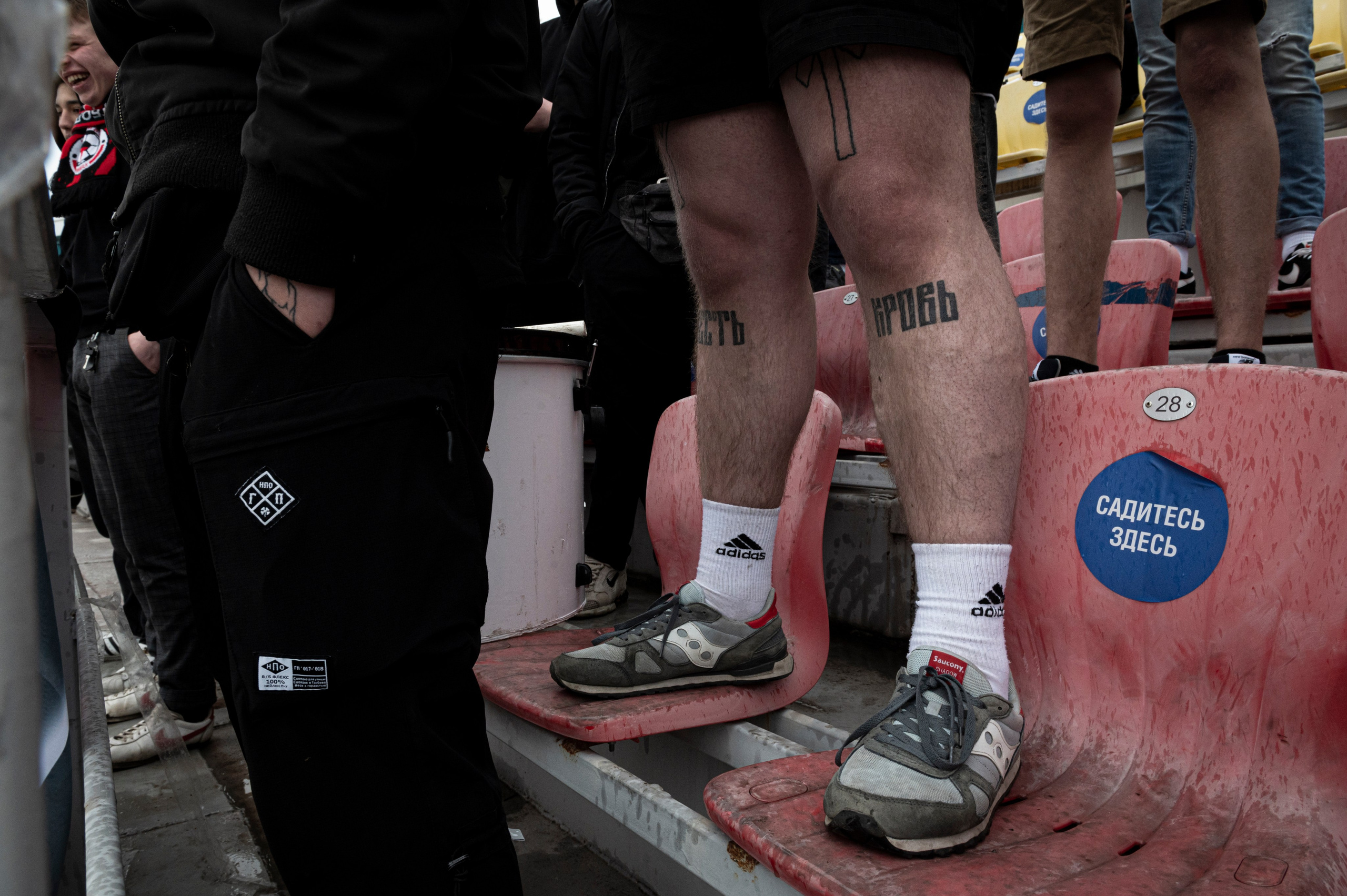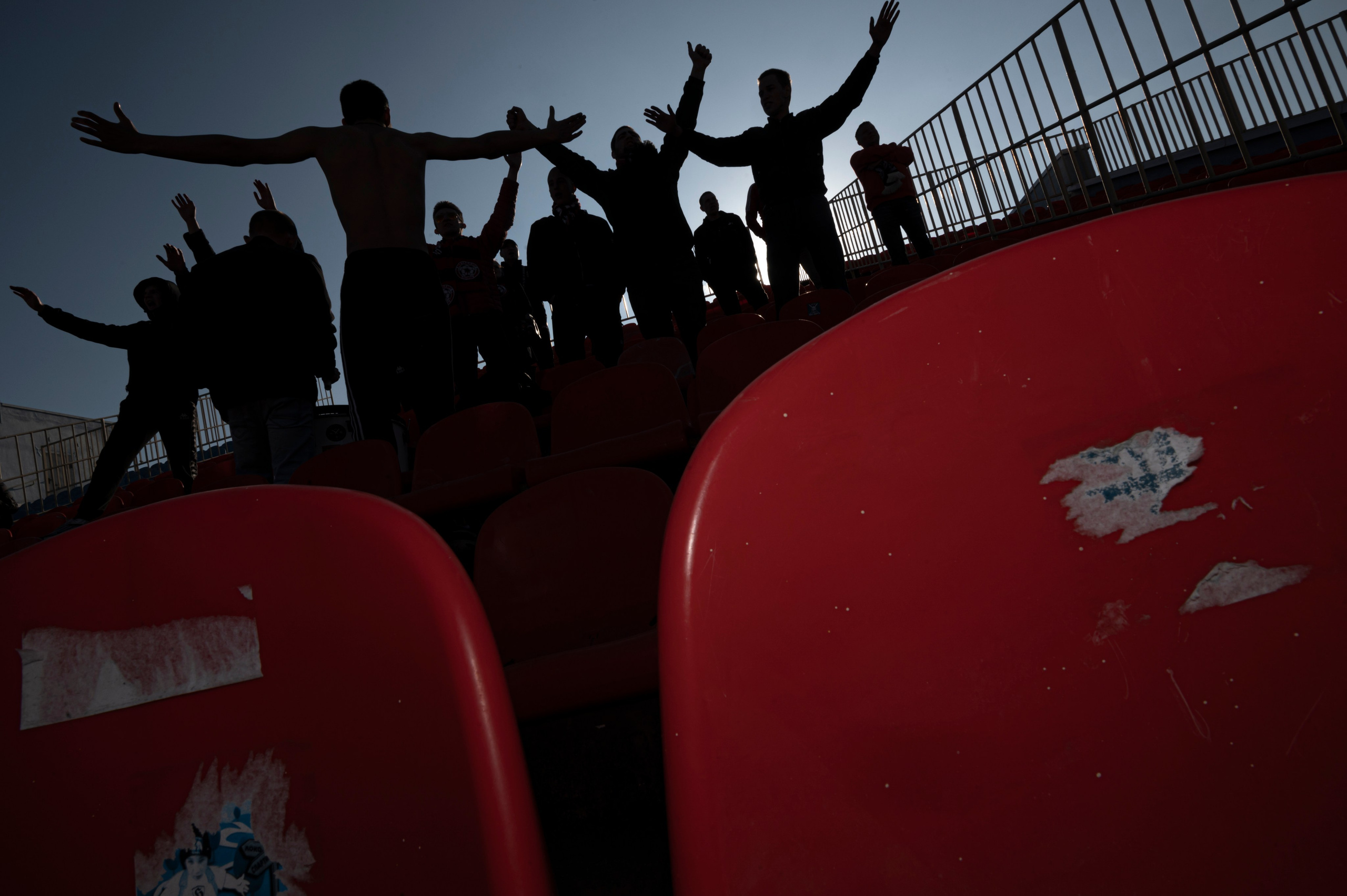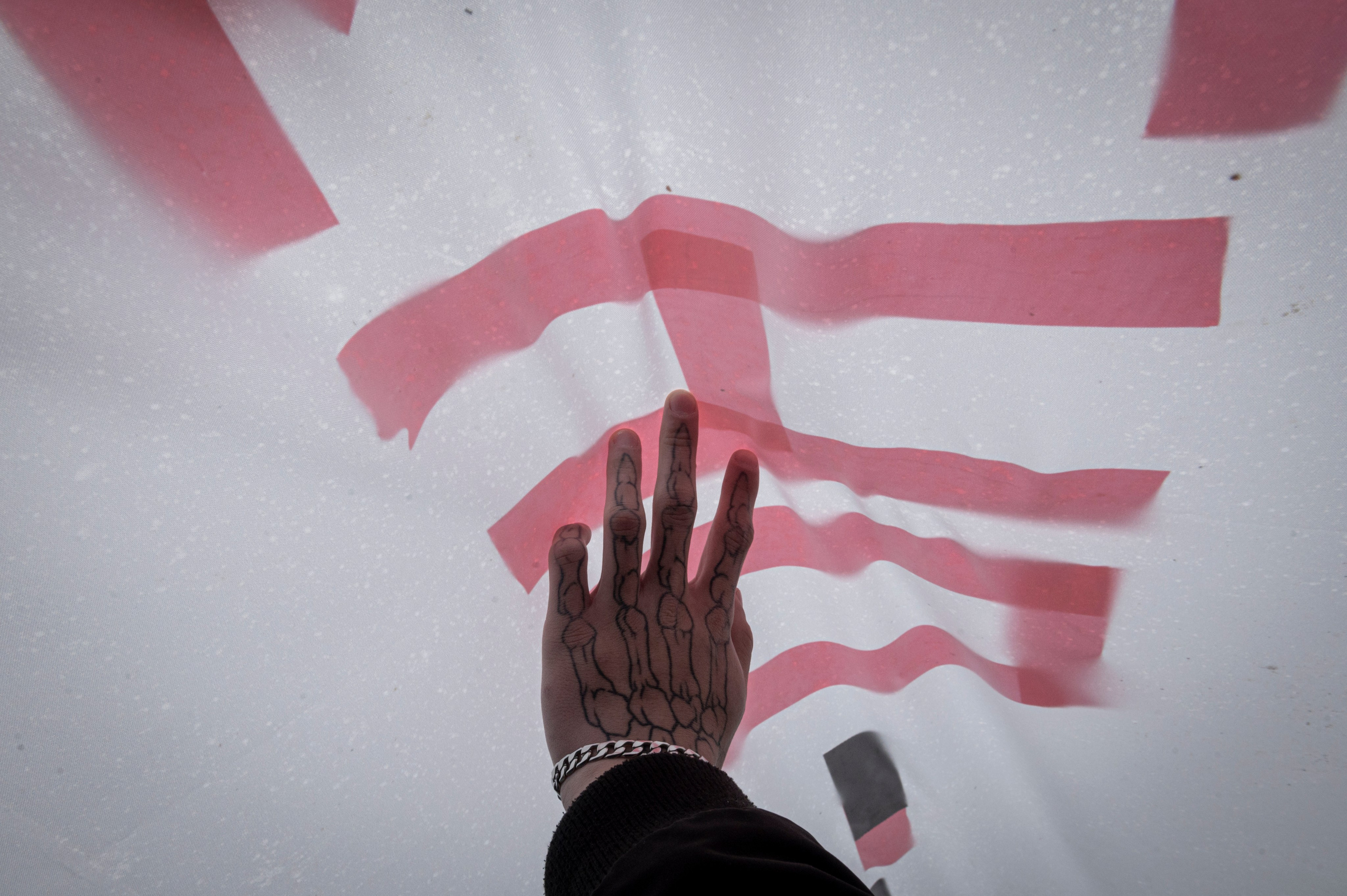The football movement originated in England, the birthplace of football. Football came to Russia in the 90s, when ordinary fans, under the influence of European fashion, united into groups. The pioneers were fans of CSKA and Spartak, who revived interest in fan culture among Russian fans. A few years later, a wave of football fanaticism covered the country. By the 1994 championship, each club had its own gangs, but clashes between them were irregular and fleeting. Currently, fan groups exist in any city in Russia that has its own football team, no matter whether this team is from the top division or from the lower leagues.
This story will focus on the local ultras District48 of the Metallurg football club in the provincial Russian city of Lipetsk.
By local standards, the fan movement in Lipetsk has a fairly long history. In 1979, the first fan flag with the city’s coat of arms was sewn. In the winter of 1985, through the diligence of fans, the first fan “roses” (scarves) were made in the city of metallurgists. Over the following years, the movement developed rapidly and grew in numbers, especially after 1990 — at some matches the number of fans tended to reach 500, but on average there were 200-300 people. Things went well with the transfer of values and ideals to younger generations and the education of new leaders. Unfortunately, closer to 2020, interest in the subculture began to decline. The number of people in the gang began to decline rapidly. A turning point and disastrous moment in the history of Russian fandom was the law on the “fan passport”, adopted in 2021. Currently, due to too strict control of the fan movement by the state, the subculture is quickly fading away — the change of generations has completely disappeared, the number of representatives at matches is rapidly declining. In 2022-2023, there were barely 30 people at home matches, and no more than 12 were sent to away games. Now the subculture is going through a very difficult period in its history and what the outcome will be is not clear. Everything is going to the point that in a few years, active fans, as a subculture, may cease to exist or will turn into a very insignificant movement from a narrow circle of people for whom fandom is an integral part of their lives.


